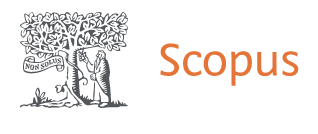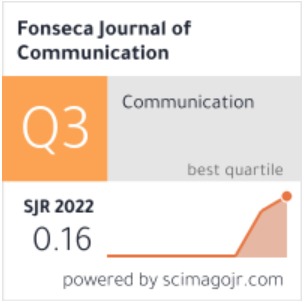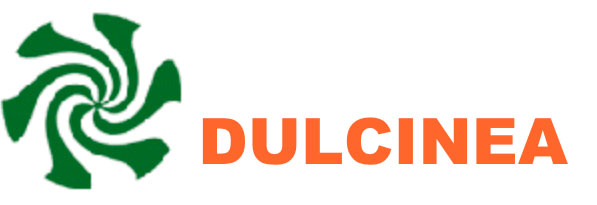CULTURAL IMAGE CONSTRUCTION IN SHORT VIDEOS: A COMPARATIVE FRAME ANALYSIS OF CONTENT POSTED ON PEOPLE’S DAILY’S TIKTOK ACCOUNT
Juan Yang
PhD Candidate, Faculty of Communication and Media Studies, Universiti Teknologi MARA (UiTM), Shah Alam, Selangor, Malaysia, 40450; Lecturer, School of Literature and Journalism, Yibin University, Yibin City, Sichuan Province, China, 64007
https://orcid.org/0009-0008-7893-0976
Muhammad Hakimi Tew Abdulla
Associate Professor, Doctor, Faculty of Communication and Media Studies, Universiti Teknologi MARA, Negeri Sembilan Branch, Rembau Campus, Malaysia 71300
https://orcid.org/0000-0002-1968-5869
Yuslinda Mat Yassi
Senior Lecture, Doctor, Faculty of Communication and Media Studies, Universiti Teknologi MARA (UiTM), Shah Alam, Selangor, Malaysia, 40450
https://orcid.org/0009-0004-9287-2507
Massila Hamzah
Associate Professor, Doctor, and Senior Research Fellow, Faculty of Social Sciences & Leisure Management, School of Media & Communication, Taylor’s University, Subang Jaya, Selangor, Malaysia, 47500
https://orcid.org/0000-0002-0505-0096
Keywords: National Narrative, Cultural Duality, Positive Perception, Framing Influence, TikTok
Abstract
This study investigates how framing and narrative in People’s Daily’s TikTok short videos shape the Chinese cultural perspective. The research aims to understand the dominant frames, narrative approaches, and connotative features of these videos and their impact on China’s national image. A qualitative approach was adopted, involving 10 media specialist interviews and content analysis of videos posted between October 1, 2021, and 2023. Thematic analysis was used to identify video topics, while comparative frame analysis compared the portrayal of China in these videos. The “culture image” highlights China’s comprehensive strength and global economic participation, including trade, poverty reduction, and the Belt and Road Initiative, presenting China as a major economic force that improves lives and promotes economic cooperation. Chinese economic leadership in stability, prosperity, and international cooperation is highlighted. The study demonstrated how state media strategically shapes China’s global image through narrative and framing, using cultural diplomacy to win over audiences. The findings enhance our understanding of the effects of media narratives on national image and highlight the potential of storytelling in cultural image. The study underscores the importance of framing and narrative in influencing national perceptions in the digital age. It highlights the role of digital platforms in allowing governments to control their global image and public opinion, calling for further research on digital media’s impact on cultural image and audience engagement. The study has significant implications for media and policymakers in enhancing cultural image communication and using narrative and visual communication to convey cultural values and engage viewers.
References
Alpermann, B., & Malzer, M. (2024). “In Other News”: China’s International Media Strategy on Xinjiang—CGTN and New China TV on YouTube. In Modern China (Vol. 50, Issue 2). https://doi.org/10.1177/00977004231169008
An, Y., Cai, S., Zhong, H., & Zhou, Z. (2023). Research on Official Media Coverage and Communication Mode on Different SNS Platforms-Taking People’s Daily’s Report on Tangshan Restaurant Attack as an Example. Journal of Education, Humanities and Social Sciences, 13, 196–204. https://doi.org/10.54097/ehss.v13i.7894
Chen, B., & Lan, S. (2022). Research on Museum Educational Display Based on Image Recognition Tracking. Wireless Communications and Mobile Computing, 2022. https://doi.org/10.1155/2022/7314887
Da-yong, Z., & Zhan, S. (2022). Short video users’ personality traits and social sharing motivation. Frontiers in Psychology, 13(December), 1–13. https://doi.org/10.3389/fpsyg.2022.1046735
Fang, J., Ni, Y., & Zhang, J. (2023). Value Assessment of UGC Short Videos through Element Mining and Data Analysis. Applied Sciences (Switzerland), 13(16). https://doi.org/10.3390/app13169418
Henig, L., & Ebbrecht-Hartmann, T. (2022). Witnessing Eva Stories: Media witnessing and self-inscription in social media memory. New Media and Society, 24(1), 202–226. https://doi.org/10.1177/1461444820963805
Jokinen, L., Mäkelä, M., Heikkilä, K., Apostol, O., Kalliomäki, H., & Saarni, J. (2022). Creating futures images for sustainable cruise ships: Insights on collaborative foresight for sustainability enhancement. Futures, 135(May 2021). https://doi.org/10.1016/j.futures.2021.102873
Kaur-Gill, S. (2023). The cultural customization of TikTok: subaltern migrant workers and their digital cultures. Media International Australia, 186(1), 29–47. https://doi.org/10.1177/1329878X221110279
Lee Ludvigsen, J. A., & Petersen-Wagner, R. (2023). From television to YouTube: digitalised sport mega-events in the platform society. Leisure Studies, 42(4), 615–632. https://doi.org/10.1080/02614367.2022.2125557
Li, Z., & Zhu, H. (2022). Online Image and Self-Presentation: A Study on Chinese Rural Female Vloggers. Online Media and Global Communication, 1(2), 387–409. https://doi.org/10.1515/omgc-2022-0015
Liu, K. (2022). Research on the Core Competitiveness of Short Video Industry in the Context of Big Data—A Case Study of Tiktok of Bytedance Company. American Journal of Industrial and Business Management, 12(04), 699–730. https://doi.org/10.4236/ajibm.2022.124036
Nielsen, W., Turney, A., Georgiou, H., & Jones, P. (2022). Meaning Making with Multiple Representations: a Case Study of a Preservice Teacher Creating a Digital Explanation. Research in Science Education, 52(3), 871–890. https://doi.org/10.1007/s11165-021-10038-2
Nixon, L. (2022). Do DMOs Promote the Right Aspects of the Destination? A Study of Instagram Photography with a Visual Classifier. In Information and Communication Technologies in Tourism 2022. https://doi.org/10.1007/978-3-030-94751-4_16
Sullivan, J., & Wang, W. (2024). Becoming Wanghong: How Foreigners Achieve Internet Celebrity in China. East Asia, 0123456789. https://doi.org/10.1007/s12140-024-09427-x
Tang, R., Shi, R., Zhao, Y., Chen, Y., & Hua, B. (2024). Social Media Use Effects on Self-Cognition and Behavior Patterns under the Network Environment. Open Journal of Social Sciences, 12(03), 360–381. https://doi.org/10.4236/jss.2024.123025
Tao, W., & Peng, Y. (2023). Differentiation and unity: A Cross-platform Comparison Analysis of Online Posts’ Semantics of the Russian–Ukrainian War Based on Weibo and Twitter. Communication and the Public, 8(2), 105–124. https://doi.org/10.1177/20570473231165563
Taylor, Z. A. (2023). Everyone Stop What You’re Doing and BeReal: Live Networked Publics and Authenticity on BeReal. Social Media and Society, 9(4). https://doi.org/10.1177/20563051231216959
Trillò, T., Hallinan, B., & Shifman, L. (2022). A typology of social media rituals. Journal of Computer-Mediated Communication, 27(4). https://doi.org/10.1093/jcmc/zmac011
Tsai, L. L. (2022). Factors that Influence Virtual Tourism Holistic Image: The Moderating Role of Sense of Presence. Sustainability (Switzerland), 14(1). https://doi.org/10.3390/su14010467
Vizcaíno-Verdú, A., & Abidin, C. (2022). Music Challenge Memes on TikTok: Understanding In-Group Storytelling Videos. International Journal of Communication, 16, 883–908.
Wang, C., Cui, W., Zhang, Y., & Shen, H. (2022). Exploring short video apps users’ travel behavior intention: Empirical analysis based on SVA-TAM model. Frontiers in Psychology, 13(July). https://doi.org/10.3389/fpsyg.2022.912177
Wang, X., & Picone, I. (2023). Mobilized, negotiated and balanced: Chinese school vloggers’ platform engagements and layered identity construction on Bilibili. Journal of Youth Studies, 26(10), 1356–1372. https://doi.org/10.1080/13676261.2022.2098705
Wei, T., & Wang, X. (2022). A Historical Review and Theoretical Mapping on Short Video Studies 2005–2021. Online Media and Global Communication, 1(2), 247–286. https://doi.org/10.1515/omgc-2022-0040
Yang, Y., Sha, C., Su, W., & Donkor, E. K. N. (2022). Research on Online Destination Image of Zhenjiang Section of the Grand Canal Based on Network Content Analysis. Sustainability (Switzerland), 14(5), 1–20. https://doi.org/10.3390/su14052731
You, C., & Liu, Y. (2022). The effect of mindfulness on online self-presentation, pressure, and addiction on social media. Frontiers in Psychology, 13(December). https://doi.org/10.3389/fpsyg.2022.1034495
Yu, Z., Hou, J., & Zhou, O. T. (2023). Short Video Activism With and on Douyin: An Innovative Repertoire of Contention for Chinese Consumers. Social Media and Society, 9(1). https://doi.org/10.1177/20563051231157603
Zeiler, X., & Mukherjee, S. (2022). Video Game Development in India: A Cultural and Creative Industry Embracing Regional Cultural Heritage(s). Games and Culture, 17(4), 509–527. https://doi.org/10.1177/15554120211045143
Zhao, J., & Zhang, D. (2024). Visual propaganda in chinese central and local news agencies: a douyin case study. Humanities and Social Sciences Communications, 11(1). https://doi.org/10.1057/s41599-024-03059-5
Zhou, Y., Liu, L., & Sun, X. (2022). The effects of perception of video image and online word of mouth on tourists’ travel intentions: Based on the behaviors of short video platform users. Frontiers in Psychology, 13(September), 1–16. https://doi.org/10.3389/fpsyg.2022.984240















